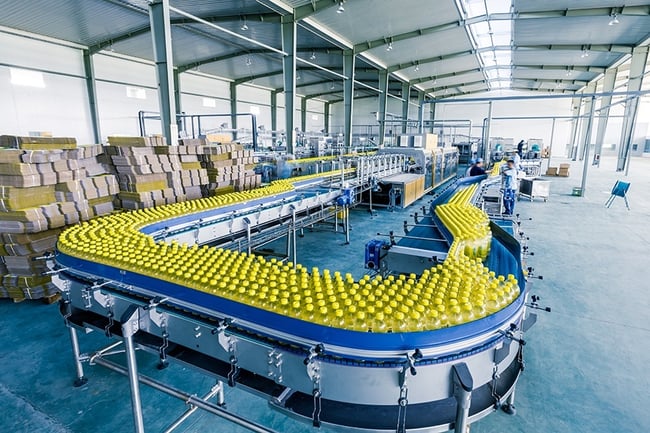 Any manufacturing facility benefits from the financial and logistical capabilities of capacity planning, no matter the size of the business. This process ensures that you are creating production plans and schedules that are feasible, given the available capacity and constraints of the system.
Any manufacturing facility benefits from the financial and logistical capabilities of capacity planning, no matter the size of the business. This process ensures that you are creating production plans and schedules that are feasible, given the available capacity and constraints of the system.
Mistakes made at this stage of production planning can be extremely costly. On one hand, having insufficient capacity results in an inability to meet your delivery dates, unhappy customers, excess work-in-progress inventory, and frustrated personnel that must deal with expedited orders on a constant basis. On the other hand, having excess capacity means that you are not utilizing your production facility to its full extent and losing money.
This is why capacity planning is essential for the success of your manufacturing facility.
What is Capacity Planning?
Capacity Planning is a method of management that features the efficient use of resources through a projection of production needs. This type of planning can apply to a company’s computer network, storage, workforce maintenance, and product manufacturing.
Planning for capacity breaks down into three steps: determining capacity requirements, analyzing current capacity, and planning for the future. To gain a better grasp on how each applies to the planning process, let us take a closer look at each one individually.
1. Determine Capacity Requirements
The first step of capacity planning is to determine how much capacity you need to meet demand. Capacity requirements are dictated by the production plan, master production schedule, or detailed materials plan. These demand signals will indicate how many items must be produced and this can be used to determine how much capacity will be required to produce the items.
In this step, businesses can organize the workload by identifying which resources are needed to accomplish the work, and how much of each resource’s capacity will be used. In the next steps, this will be compared to the available capacity of the production facility to determine whether it can successfully meet the demand.
2. Analyze Current Capacity
Businesses take an in-depth look at their current production schedule to evaluate capacity. They analyze each workload and system as a whole, following these steps:
- Analyze the performance of resources by comparing predicted versus actual outputs.
- Check the usage of the various resources of the system.
- Take a look at the resource utilization for each job or item type and decipher which ones are the major users of each resource.
- Determine where each workload spends its time. This provides insight into which resources take the greatest portion of response time for each workload.
Analyzing your current capacity is essential to have a realistic understanding of the capacity you can utilize. This will allow you to generate accurate and feasible production plans and identify potential areas of improvement.
3. Plan for the Future
Finally, after analyzing your current capacity, it’s time to plan for the future. Creating a capacity plan for the future will allow you to identify potential capacity bottlenecks to prevent overwhelming the production system. The use of ‘What-If’ scenarios can be used to combine demand forecasts with actual demand to create the most optimal production plan and schedule and have enough time to resolve issues before they arise.
If your available capacity is consistently lower than the capacity required to meet your demand, you may want to look at ways to increase your capacity to meet demand. Depending on the facility and capacity requirement, this can include adding overtime, additional shifts, improving production processes, or even investing in additional machines.

These three steps in capacity planning help your organization prepare for future growth. An optimal capacity configuration ensures you meet your promised delivery dates while only purchasing what you need to get the work completed. Capacity planning facilitates your manufacturing processes’ well-being and offers your company an opportunity to optimize its production process and ready itself for the future.
This type of dynamic planning provided by PlanetTogether APS has reduced the brewery's setup time by 30%.BRIAN GOODWIN, MASTER SCHEDULER, NEW BELGIUM BREWING
PlanetTogether’s Advanced Planning and Scheduling (APS) software helps capacity planners by automatically generating a concurrent production plan and schedule. This ensures that your resource capacity is utilized to its full potential while ensuring that the production schedule is feasible and realistic.
PlanetTogether’s Advanced Planning and Scheduling (APS) Software
Advanced Planning and Scheduling Softwares have become a must for modern-day manufacturing operations as customer demand for increased product assortment, fast delivery, and downward cost pressures become prevalent. These systems help planners save time while providing greater agility in updating ever-changing priorities, production schedules, and inventory plans. APS Systems can be quickly integrated with an ERP/MRP software to fill the gaps where these systems lack planning and scheduling flexibility, accuracy, and efficiency.
With PlanetTogether APS you can:
- Create optimized schedules that balance production efficiency and delivery performance
- Maximize throughput on bottleneck resources to increase revenue
- Synchronize supply with demand to reduce inventories
- Provide company-wide visibility to resource capacity
- Enable scenario data-driven decision making
The implementation of an Advanced Planning and Scheduling (APS) Software will take your manufacturing operations to the next level of production efficiency by taking advantage of the operational data you already possess in your ERP system. APS is a step in the right direction of efficiency and lean manufacturing production enhancement. Try out a free trial or demo!




















LEAVE A COMMENT